New Nissan Qashqai e-Power review
As the cost of fuel continues to surge, a new petrol-sipping hybrid is headed to Australia and it’s unlike any other on sale.
New Cars
Don't miss out on the headlines from New Cars. Followed categories will be added to My News.
Nissan is preparing to take on hybrid heavyweights Toyota with a petrol-electric system unlike any other on sale in Australia today. Known as e-Power, it will arrive in the second half of the year in the new Nissan Qashqai.
The third generation of the popular compact SUV goes on sale in Australia soon, but only with low-voltage mild-hybrid power. In contrast, e-Power is a high-voltage full-strength hybrid system. Both more powerful and efficient, it’s expected to go into top Qashqai variants.
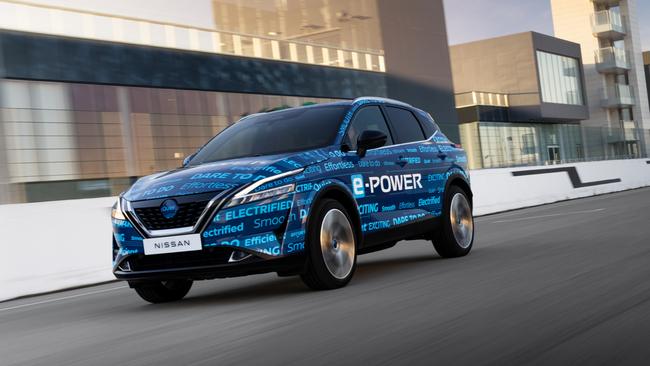
Nissan powertrain development chief Matthew Wright estimates the real-world fuel consumption of the Qashqai e-Power will be around 10 per cent better than the competition. According to the WLTP test standard, the Nissan beats the slightly larger RAV4 Hybrid by more like six per cent.
It’s the way Nissan’s system drives that will swing customers, Wright says.
“You’ve got a slight benefit on efficiency, but I think that driving benefit you get – that instantaneous response and linear acceleration through the range – I think gives a real benefit over the Toyotas.” Also, e-Power sounds “more natural”.
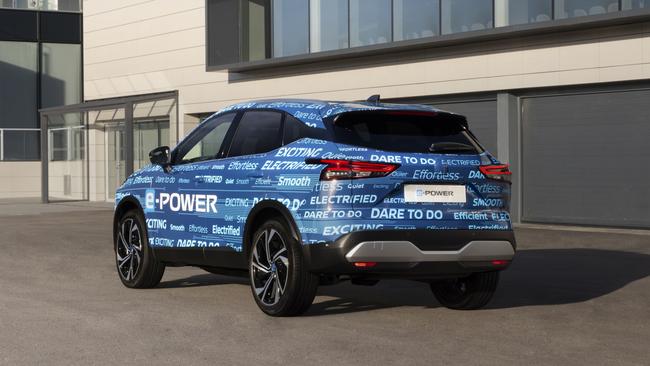
All hybrids on the market in Australia today blend power from internal-combustion engines and electric motors to turn their wheels. They’re what engineers call parallel hybrids.
Nissan’s system is completely different. With e-Power, all of the power to turn the wheels comes from electric motors. There’s an internal-combustion engine on board, but its only job is to spin an electricity generator. It’s what engineers call a series hybrid.
This means it should feel more like an electric car to drive than other hybrids. It’s just that its juice is supplied by an on-board power station instead of stored in a battery pack. Mostly. There is a small battery pack under the rear seat of the Qashqai e-Power. It’s there mainly to store the energy captured through regenerative braking.
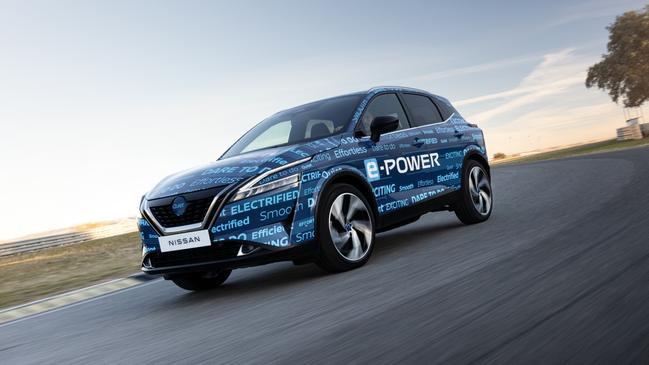
The battery supplies boost when the accelerator pedal is floored. So even though the engine’s maximum generating power is 116kW, the electric motor driving the Qashqai e-Power’s front wheels can put down 140kW.
As in other full-strength hybrids, the battery pack can also propel the Nissan when its engine is shut down. One engineer estimated it could cover 2-3km this way.
While the Qashqai e-Power hasn’t yet launched in Europe, Nissan brought some to an event in Spain designed to showcase the brand’s commitment to electrification.
Though they would only allow a brief four-lap drive on a racetrack full of cone chicanes, it was enough to get a feel of how e-Power works.
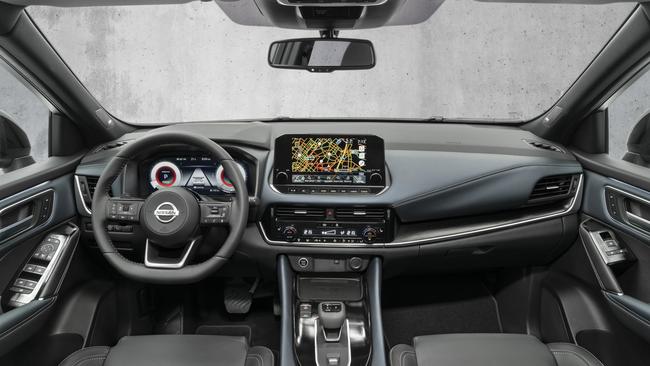
Though the Qashqai e-Power doesn’t seem to have the off-the-line zap of some single-motor battery-powered EVs, it’s no slouch. Once rolling it feels more EV-like, snappily supplying a surge of acceleration at typical overtaking speeds.
At low speeds the Nissan often switches to electric mode. The engine fires up swiftly and smoothly when more performance is required.
The turbo 1.5-litre triple is a downsized version of the 2.0-litre four used by Nissan’s Infiniti luxury brand, and features the same advanced, efficiency-boosting variable compression ratio technology. The has the distinctive warble of a triple, but the sound is well muted.
Toyota hybrids often hold engine revs steady while the vehicle accelerates, which can seem weird to some. In the Qashqai e-Power engine revs vary in line with speed, more like a normal non-hybrid powertrain.
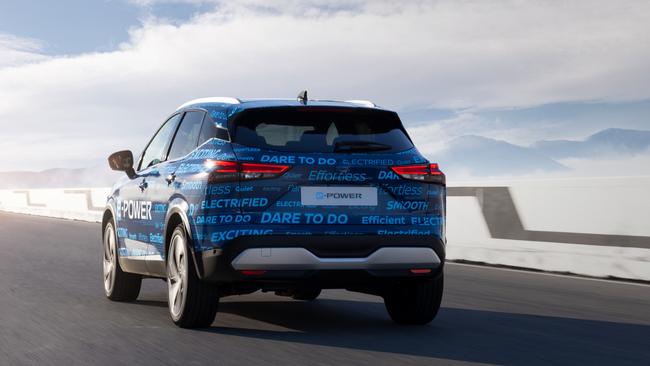
While other car makers are counting on plug-in hybrids to provide a bridge between internal-combustion cars and EVs, Lyons thinks e-Power can do the job for Nissan.
“We believe that e-Power is actually going to play the role to bring our customers on the journey into a BEV (Battery Electric Vehicle) future,” she says.
“We believe it’s enough.”
BUT WAIT THERE’S MORE …
Nissan’s e-Power technology will also go into the new X-Trail, due to arrive before the end of the year, where it will be combined in some variants with Nissan’s new e-4orce all-electric all-wheel-drive system.
And there will be more – in smaller and larger vehicles.
In theory, it wouldn’t be a problem to beef it up to Nissan Patrol size.
It could feature in future models from Mitsubishi and Renault, brands that are technically and financially allied to Nissan.


